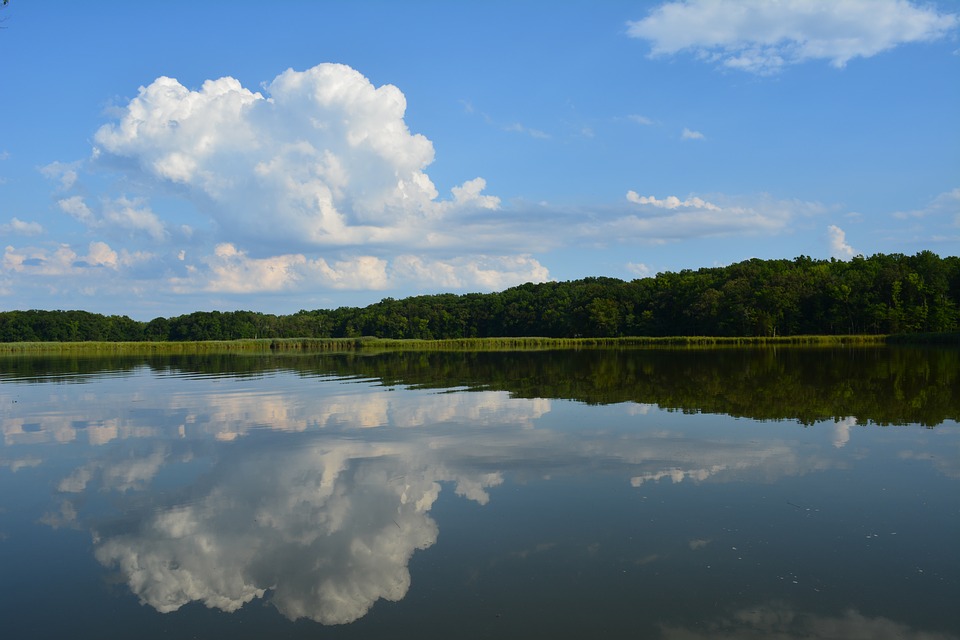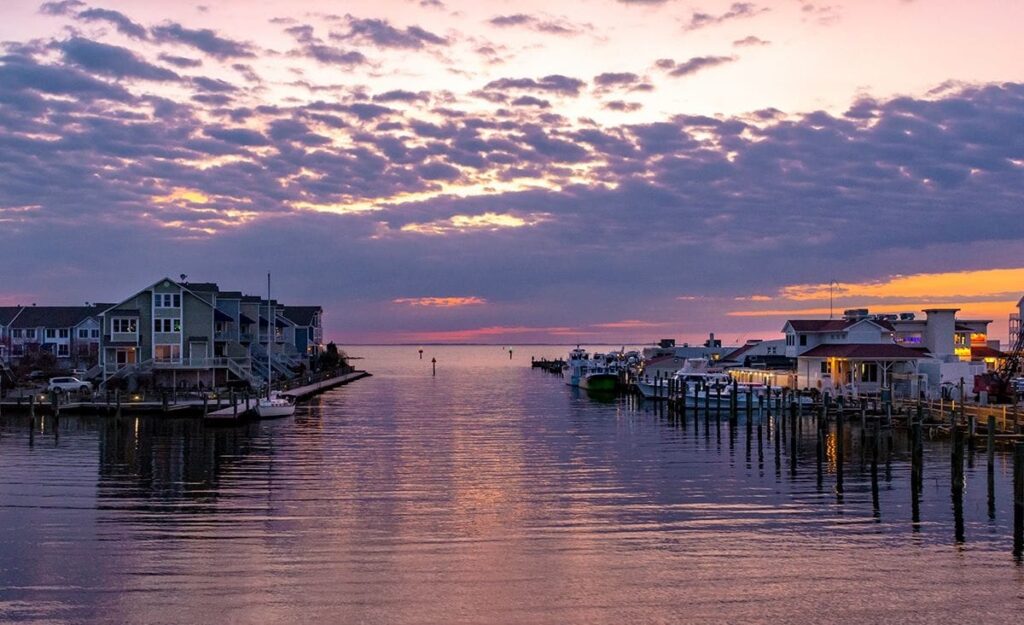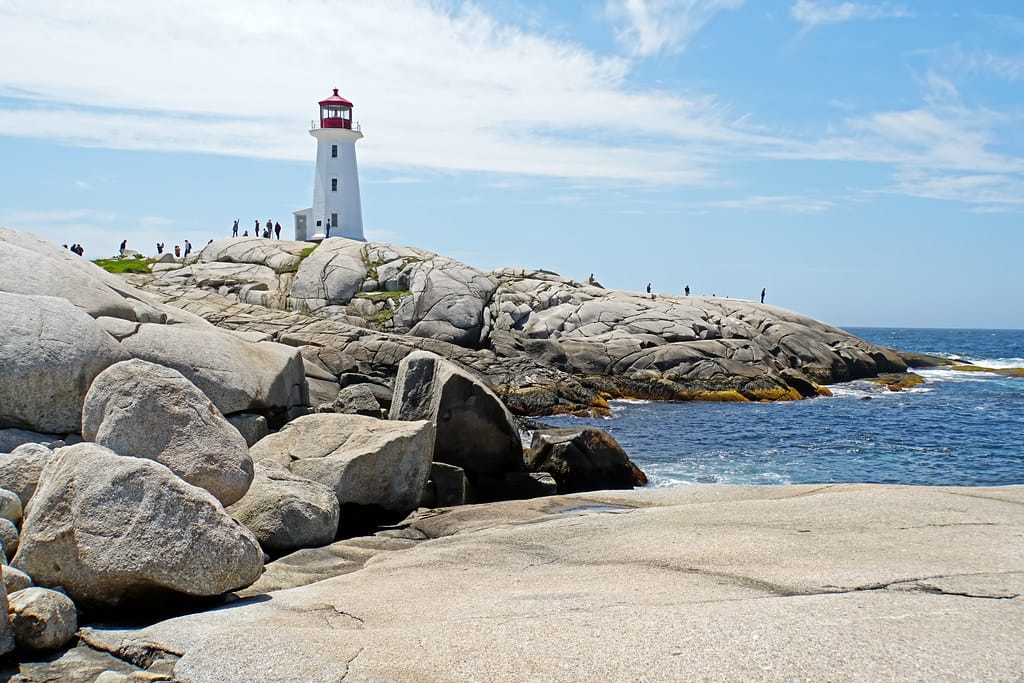Best Sailing Destinations in Chesapeake Bay
Few places on Earth are as easy and beautiful to sail as the Chesapeake Bay, with its rich maritime history, attractive villages, and innumerable bays, creeks, and anchorages. It’s no secret that Annapolis, MD is America’s Sailing Capital, and it’s home to some of the top sailing spots in the country. The Chesapeake is a body of water that stretches 200 miles from the mouth of the Susquehanna River in Havre de Grace to the Virginia twin capes. It varies from 3 miles wide in the north to 25 miles wide in the south. Its lowest point is 200 feet south of Bloody Point on Kent Islan, despite being notoriously shallow in some of its finest streams and bays. It’s important to note that weather and navigational conditions vary greatly in the Chesapeake Bay. Now, keep reading in order to learn more about the best sailing destinations along the Bay!
Baltimore, Maryland
The Patapsco River empties into Baltimore’s Historic Inner Harbor. The Inner Harbor is a fantastic place to start sailing because it has a lot of marinas. In the Harbor, you can see historic Federal Hill and Fort McHenry, and when the Patapsco opens up into the bay, you’ll find other outdoor attractions including North Point State Park and Fort Smallwood Park. The true city on the northern bay, Baltimore is a must-see when sailing there. Henderson’s Wharf Marina, located in the center of Fells Point, has a great anchorage.
You’re nearby to many of Baltimore’s top pubs, taverns, and music venues. Consider sailing to Smith Island, Worton Creek, and Island Pond, find an anchorage, and relax aboard. In fact, the unlimited possibilities are what you will enjoy most about this body of water. But, note that despite all of the sailing and racing many people do there, they feel like they’ve merely scratched the surface.
Galesville, Maryland
Galesville is a small town on the west bank of the bay situated along the West River. This lovely town used to have a steamship line that ran between Annapolis and Baltimore, and it was previously home to numerous Chesapeake Bay watermen. The West River Sailing Club and Hartge Yacht Harbor are now located there, making it a popular site for leisure boating. Galesville is located at the end of Route 255, which becomes Galesville Road and then Main Street as you travel deeper onto the little peninsula. Main Street comes to an end at the water’s edge, where there is a small community park with a 14-mile boardwalk along Riverside Drive on the West River.
Wye River, Maryland
This is one of the most tranquil and bucolic places in the Bay. When sailing there, the place will instantly make you forget the city life. The Wye is a 16-mile-long tributary that surrounds Wye Island, a 2,800-acre nature preserve. Wye Island, on the Miles River’s northern shore, is home to bald eagles and great blue herons. It also features “Schoolhouse Woods,” the Eastern Shore’s biggest intact stretch of old-growth forest. The Wye also has several additional magnificent protected creeks and bays where you may drop a line and find your own little heaven. It’s advisable to take your dinghy and go exploring. Along the island’s lonely shoreline, there’s an almost infinite supply of isolated picnic-perfect beaches.

Solomons Island, Maryland
Solomons Island, located at the mouth of the Patuxent River, was home to multiple 19th-century shipyards that supported the local fishing industry. Many marinas, seafood restaurants, the Calvert Marine Museum, and the Annmarie Sculpture Garden & Arts Center are on Solomons Island today. Its riverside location makes it a popular cruising destination. At the confluence of the Bay and the Patuxent River, Solomons Island is a small, working fishing town. Solomons Island has quickly become a favorite among sailors due to its abundance of activities. Calvert Cliffs and the Drum Point Screwpile Lighthouse offer fantastic restaurants and stores, as well as fossil collecting. To get the most out of your voyage, set aside two days, stopping in Harrington Harbor on the way down and St. Michaels on the way back.
Potomac River
Bay cruisers know Solomons is a beautiful destination with excellent marinas, restaurants, and a fantastic maritime museum, as well as a suitable staging place for crossing the Potomac. It’s about 40 miles south of Solomons to the next harbor, either Reedville or Tangier. When the wind resists the current at the mouths of the rivers in the Chesapeake, the water can become “lumpy.” When the current and wind is in opposition, the Potomac’s mouth should be acknowledged as the Bay’s major tributary. Ducking into Tangier Sound through Hoopers Strait or Kedges Strait and visiting the Eastern Shore will be a more comfortable trip in such conditions.
This route will take you to some of the most isolated and underdeveloped portions of the Lower Eastern Shore. You will also find innumerable lovely and secluded anchorages and several little villages worth seeing, such as Deale Island, Onancock, and Crisfield. The picturesque Pocomoke River, which makes its way through a cypress swamp, may be accessed from Crisfield. This is a truly magical location. There will be no noises of human activity if you turn off your engine.
Saint Michaels, Maryland
In St. Michaels, there are many marinas, a protected anchorage, a launch service, and great restaurants and pubs. The town is arguably one of the most attractive and popular on the bay. The Chesapeake Bay Maritime Museum is St. Michaels’ crown jewel. Many permanent displays at the museum illustrate the geological, social, and economic history of the Chesapeake Bay from the dawn of sail through the period of steam and diesel-powered ships. A great variety of vintage boats are always on display at the museum’s piers, and people are routinely invited onboard for short cruises on the Miles River. In addition, St. Michaels has seen a bit of a gastronomic explosion in recent years, and it now boasts some very good, fashionable new restaurants. For example, 208 Talbot is a terrific spot to go for a casual, relaxing supper in a pleasant setting.
Tilghman Creek, Maryland
If you can’t find a berth for the night after a long day sailing to St. Michaels, you might not want to push into the port. This is particularly true if you are not passing through Kent Narrows. Tilghman Creek is located on the Eastern Bay, just around the corner from Rich Neck. Claiborne is a little settlement at the head of the creek. There is a couple of workboats moored nearby. There are also a few houses along the creek. Despite the seeming availability of space, you should avoid anchoring near the creek itself to prevent interfering with the watermen who leave early in the morning.

Annapolis, Maryland
Annapolis, also known as the US Sailing Capital, is home to a number of boat shows, and the National Sailing Hall of Fame. Its location along the South River, Severn River, and the Chesapeake Bay make it an excellent sailing launch point. Annapolis is one of the bay’s most historic and well-preserved waterfront cities. You could spend days wandering here, with the beautiful Maryland Statehouse, the Governor’s Mansion, the classic and traditional Naval Academy, and the twisting lanes and old maritime mansions. Pussers Caribbean Grille, which overlooks Spa Creek, is one of the area’s traditional pubs. Note that you can rent a mooring ball in one of the marinas in Back Creek. Lastly, getting around Annapolis is not hard because there’s a water taxi service.
Delaware Bay, Delaware
Delaware City is located on the northern end of the Delaware Bay, about 1/2 mile north of the C&D Canal’s Eastern entrance. It is a small community that may be reached on foot from the Delaware City Marina. The Cohansey River is located just southeast of where the Delaware Bay meets the Delaware River. The river is a shallow salt marsh at the Bay entry to the Cohansey. As one moves upstream, the river gets increasingly forested. The salt marsh location has excellent anchoring in terms of water depth and swing space.
Philadelphia, the City of Brotherly Love, is roughly 35 NM east of the canal entry. The entrance to the Christina River and the Port of Wilmington is about 10 miles up the river. Lewes, a beautiful hamlet across the bay from the Cape May Canal, is only 12 miles away. At the bridge that spans the canal and goes to the beach, you will find the city dock. The west end of the Cape May Canal, where the Cape May-Lewes Ferry terminal is located, is where the approach to the harbor from Delaware Bay begins.
Note that before crossing Delaware Bay, you should carefully check the weather forecast. This vast, wide, and exposed body of water is located in the Southeast to Northwest direction. Don’t get me wrong: it’s a great ride in good weather. In this stretch, however, you just have to be cautious! It’s advisable to stay in port if the conditions seem unpleasant for sailing.

Deltaville, Virginia
The majority of the boats heading south from Solomons easily cross the Potomac, stopping in Reedville or Deltaville, Virginia. The rivers and creeks of Virginia’s Northern Neck lie between these two attractions. You’ll know you’re in the Southern Chesapeake whether you choose the larger waters of the Great Wicomico or the well-protected shelter of Mill Creek. Both hurricane holes and anchorages are open to summer breezes in Dividing Creek. Also, note that Hughlett Point State Park’s sandy beaches are accessible from this location.
Experienced Southern Bay sailors will tell you one thing about Stingray Point, which marks the southern end of the Rappahannock River’s entry. They’ll tell you to keep your depth and not wander too close to the mark at first. Expect nice marinas with amenities and maritime services in Deltaville, which is a bit more spread out than other towns with a charming center to meander through. Carter Creek is located on the far side of the Rappahannock River Bridge on the northern side of the river, sometimes known as the “northern neck.” The Chesapeake Restaurant & Terrace offers a unique touch on coastal cuisine for casual dining.
Tangier Island, Virginia
Tangier Island is a must-see on any Southern Bay voyage. You will dock at Parks Marina in Tangier during your stay. Note that Tangier’s sole industry is seafood. For 350 years, the island’s economy has been based on crabbing, oystering, and fishing. Tangier Island’s main street, lined with crab shanties, many of which are built on stilts over the water, provides a view of the working Chesapeake that has vanished from almost every other harbor. The island is a significant soft crab provider. Tangier History Museum and Cultural Interpretive Center is the most prominent museum dedicated to the lives of Chesapeake Bay watermen.
